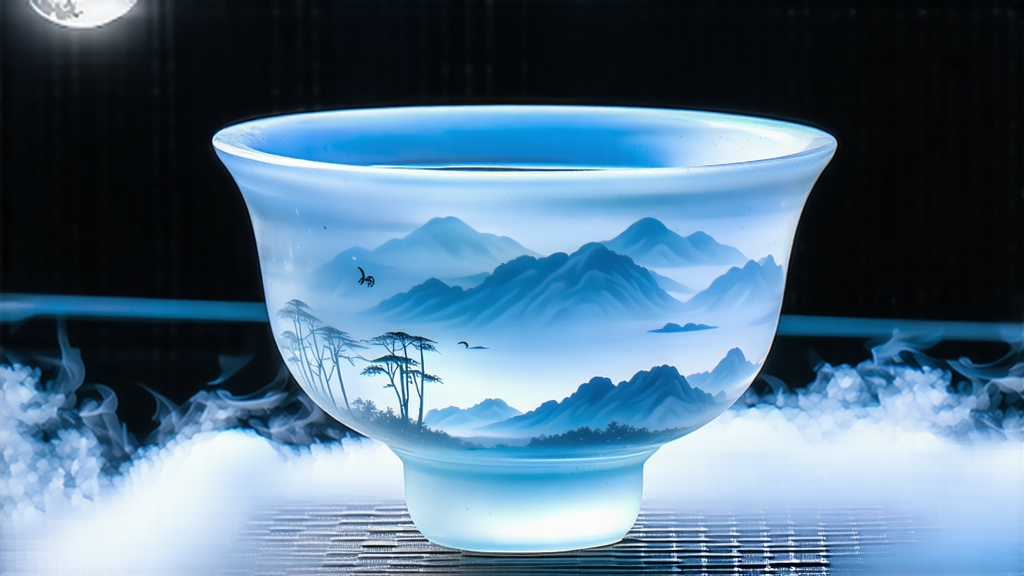
White tea is the quietest child in the Chinese tea family, and within that hush White Hair Silver Needle (Bai Hao Yin Zhen) is the hush made audible. To the uninitiated it looks like nothing more than a pile of pale pine needles; to the initiated it is moonlight preserved, a sip of late-summer night air that somehow survived the dawn. This article invites the international reader to lean in and listen to that quietness—its history, its making, its brewing, and the subtle language in which it speaks to the palate.
-
Historical whispers
The first written record of “white tea” appears in the Song Dynasty treatise Da Guan Cha Lun (1107 CE), yet the Silver Needle we recognise today did not emerge until the late eighteenth century in Fujian’s Taimu Mountains. Local legend claims that a tea maiden named Lan Gu spilt moonlight on freshly picked buds; by morning they had turned silvery and exhaled a fragrance no firing could imitate. Whether myth or marketing, the story captures the essence of the tea: minimal intervention, maximum night. Export began in 1891 when Fuding merchants sailed the tea to Hong Kong and then to Victorian London, where it was marketed as “Flowery Pekoe Tips” and sold at twice the price of black Keemun. In the West it remained a curiosity until the 1990s wellness boom, when studies on white tea’s antioxidant content turned the needle into a luxury health item. Today, the EU protects “Fuding Bai Hao Yin Zhen” as a PDO (Protected Designation of Origin), mirroring the status of Champagne. -
Terroir and taxonomy
Authentic Silver Needle is produced only in two micro-zones: Fuding County and Zhenghe County, northern Fujian. The cultivars must be Fuding Da Bai or Zhenghe Da Bai, large-bud varieties whose fat spring tips can reach 3.5 cm and carry a dense down that reflects light like frost. Attempts to replicate the tea in Yunnan, Assam or even Kenya yield longer, darker buds lacking the lanolin-sweet aroma; the difference lies in the maritime monsoon climate, red-yellow lateritic soil and the 10 °C diurnal swing of early April. Within the official Chinese classification, Silver Needle is the top grade of white tea, followed by White Peony (Bai Mu Dan) and then Shou Mei. No other leaf is added—only the single unopened bud, plucked for about ten days each spring when the down is pearl-white but before the first scale unfurls. -
Craft: the art of doing almost nothing
The entire process contains only two verbs: wither and dry. Yet within those verbs lie a thousand decisions. Picking starts at dawn when the dew still protects the buds from oxidation. Baskets are woven from thin bamboo slats so that no edge bruises the down. Once in the factory, the buds are spread one layer thick on sieves made of horse-hair mesh—plastic would trap moisture and scent. For the next 36–48 h the tea rests in a climatised loft where temperature is held at 22 °C and humidity at 65 %. No fans blow; air moves only through louvered pine shutters that face north, avoiding direct mountain sun. Master Chen Lian, a 72-year-old withering judge, describes the moment of readiness: “When the bud snaps instead of bends, and the down stands up like a cat’s fur stroked backward, we stop.” The final drying uses charcoal baskets fired from local hardwood, but the fire is so gentle that a hand can rest on the bamboo tray above it. Moisture drops to 5 % without ever exceeding 40 °C, preserving the enzymatic soul that will continue to age in the finished cake or tin. -
From leaf to liquor: brewing ritual
Western guides often recommend 90 °C water and three-minute steeps; this produces a pleasant, honeyed liquor but misses the tea’s spectral delicacy. The gongfu approach, scaled to a 150 ml gaiwan, is kinder: 3 g of buds, 80 °C water, flash infusions starting at 5 s and doubling each time. The first rinse is not discarded; it is the “awakening bath” that lets the down release its